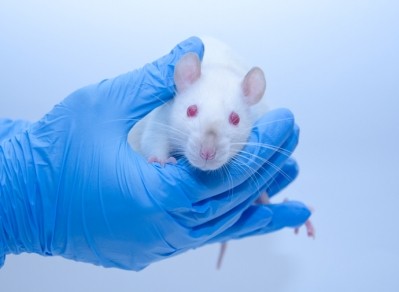From the Editor's Desk
'Edgy' sports nutrition formulas cast a long and deep ethical shadow

Temptation and redemption seems to come in cycles of a certain length, I think it’s no coincidence that according the Bible, in Noah’s flood it rained for 40 days and 40 nights, and Jesus spent 40 days in the desert in his contest with Satan. It’s eerily similar to all of those six-week body transformation plans (42 days for those who are even worse at math than I am) that festoon the Internet.
A time for all things
Cheating in sports has its cycles, too. When EPO first became the drug of choice among professional cyclists (the sport where it gained the strongest foothold), users quickly learned how to match the drug’s half life and its effects to the timing of competitions and drug tests. Lance Armstrong told a lot of lies during his time as the world’s most infamous and most adroit doper, but his statement that, “I’ve never failed a drug test” was true.
EPO, or erythropoietin, was developed to help the body produce more red blood cells in situations in which that function is compromised, such as during heavy chemotherapy. But it does that for healthy bodies, too, allowing an athlete who chooses to cheat in this way to carry more oxygen in the blood, with marked aerobic performance benefits.
Armstrong, we might note here, may have emerged from his time in the desert. He has recently resurfaced as an endorser of a sports-related product, a lotion that purports to deliver sodium bicarbonate to working muscles without the unwanted side effects of oral ingestion.
If we look a further back to the dawn of large scale cheating with chemicals, the early transgressors were not as practiced as the crew around Armstrong and his Svengali—Italian doctor and physiologist Michele Ferrari—ultimately became.
BALCO scandal
The first big scandal involved the activities of a group of rogue formulators associated with the Bay Area Laboratory Cooperative, or BALCO, a company founded by Victor Conte in 1984 that operated until 2003. This group concocted the designer steroids that allegedly helped players like Barry Bonds pose as home run hitting supermen after the age of 30.
These outsized results, and the outsized nature of the players themselves (a number of players bulked up significantly, and in Bonds’ case observers noted that both his head and feet seemed bigger than they were when he was a young and lithe outfielder) made it seem in retrospect obvious that something was going on.
Major League Baseball attempted to look the other way for a time, and the first drug testing protocols were half heartedly enforced and fairly easily circumvented. Bonds steadfastly maintained his innocence. Even so, subsequent court documents showed that four samples taken from Bonds had failed drug tests, results which didn’t come to light until years later as part of evidence given during his perjury trial.
The pressure on athletes to perform is intense. A study done in 2018 among US Olympic athletes cited a ‘win at all costs’ culture. Only 9% of the athletes said that would induce them to use tainted products or to cheat outright with drugs. Based on the results of other similar surveys I’ve seen, I’d guess that figure is low.
Steroids fellow travelers
And some sports nutrition products, particularly in the muscle building categories, find their home in an ethically murky part of the industry. Many professional muscle builders are fairly open about their steroid use. Some observers say that it’s pie in the sky thinking that an amateur could match the muscle size and definition they are able to achieve without these aids.
Nevertheless there is a desire on the part of many consumers to try to achieve those goals, and for some, ‘edgy’ products are seen as the way to get there. Going over the ethical edge in this category could include the use of SARMs, or selective androgen reuptake modulators, amphetamine like stimulants such as DMAA or BMPEA, the addition of sibutramine or its analogues, and other questionable formulation choices.
This has led FDA to include sports performance products in its list of problematical categories along with weight loss products and those that proffer sexual enhancement. The industry has fought back with certifications from NSF, Informed Choice and the Banned Substances Control Group. And stakeholders like the Council for Responsible Nutrition helped get the Desiger Anabolic Steroid Control Act passed.
Shining a light
And NutraIngredients-USA is doing its part by trying to shine a light on the issue. Later this month we will published a special edition focused on sports nutrition. And on Feb 3-5, 2020, NutraIngredients-USA will host its 3rd annual Sports Nutrition Summit in San Diego.
Nevertheless, continued vigilance is necessary. A few years ago, when Chicago Bears wide receiver Alshon Jeffery failed a drug test and blamed his failure on a supplement, that was taken more or less at face value by much of the mainstream media including a columnist for the Chicago Sun Times who is a former colleague of mine. In a subsequent dialogue I made the case to him that it was extremely unlikely that Jeffery would have failed a test if he had used only supplements certified by one of the third parties. The columnist wasn’t buying it, and stuck to his guns that supplements and their makers are inherently suspect.
So that’s what the industry is up against. The monster born of BALCO and nurtured by the likes of USPLabs has grown adulthood and is proving hard to take down. It will take the concerted effort of sports stakeholders to uphold the highest principles over a sustained period of time to regain control of the narrative.
















